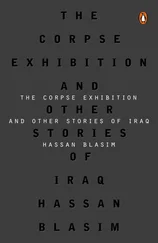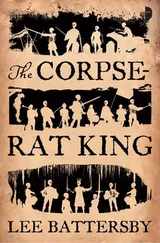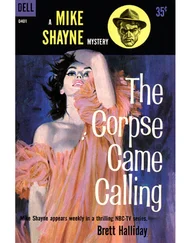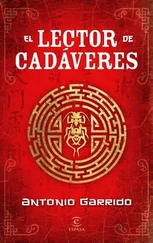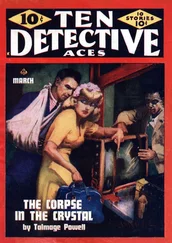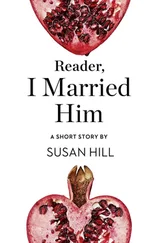
GLOSSARY
Alchemy: Jindanshu , or “gold and cinnabar technique,” is the term most commonly used to refer to external Taoist alchemy, or waidan . The first alchemical techniques are mentioned in works such as the Huainanzi using the term huanbaishu , or “white and yellow technique,” colors that designate silver and gold or their substitutes. Cinnabar also took on considerable importance in the manufacture of pills or long-life elixirs. This operation is known as liandanshu (“cinnabar refinement technique”) or xiandanshu (“cinnabar immortality technique”). Numerous chemical and botanical discoveries were made in the application of these procedures, with various therapeutic uses. During the Han dynasty, Taoist alchemists, in trying to formulate an immortal elixir, created numerous fires by experimenting with mixes of sulfur and saltpeter (potassium nitrate). One of these alchemists, Boyang Wei, wrote a text on alchemy called The Kinship of the Three , pointing to the explosive properties of certain materials. Many of the early mixes of Chinese gunpowder contained toxic substances such as mercury and arsenic and can therefore be considered a form of early chemical warfare. From the time of the Tsong dynasty, the term dandingpai , or “cinnabar and crucible,” began to be used to refer to alchemy in general.
Bialar : In Cí Song’s time, men always went out with their heads covered by a cap, a mortarboard, a bonnet, or a skullcap, and with their hair tied in a bun underneath. Clothes, and in particular a person’s hat, reflected social status. A winged cap might “fly” horizontally over the ears or have a turned-down brim, depending on the rank of the wearer. Poor people bundled up a threadbare strip of cloth and placed it on their heads.
Birthdays: The Chinese count people’s ages differently from how it is done in the West. In the West, the birthday is the anniversary of one’s birth, but in China people are considered one year old at birth, and turn two years old at the first lunar new year (the first new moon in January or February) of their life. For example, a child born in November will be two years old by the end of February, even though only three to four months have passed. The date of birth was recorded only to determine the person’s horoscope rather than to measure age.
Conservation Chamber: Also known as tong bing jian , or “bronze icebox,” this was a small metal chest with ice-filled compartments for conserving food, ice cream, or drinks. One of the first proven refrigerators was found in the province of Hubei and dated to around 300 BC.
Coolie: A lower-class worker or servant or an unqualified peon. The term has been used in the West as a pejorative reference to the Asian labor force that immigrated to the Americas in the nineteenth century. It is associated with the English word coolie as used in reference to a stevedore or longshoreman. The word originated as gūlí or kŭlì , which translates as “the bitter use of brute force,” and has cognates in the Bengali kuli and the Hindu qūlī .
Hanfu : The traditional clothing worn by the Han tribe, which has made up the majority of the population throughout China’s history. The hanfu consisted of a loose-fitting white gown with wide sleeves that crossed the chest and attached to the belt. Beneath this, men wore pantaloons. Homeless or destitute people wore hemp jackets and scruffy pantaloons and turbans. Women and men wore black silk caps and long-sleeved silk tunics dyed turquoise, vermilion, and purple, and fastened with jade, gold, or rhinoceros horn buckles. The outfits were regulated by sumptuary laws, provisions that restricted the wearing of the most luxurious garments to the upper classes. These laws were ineffective in practice. Imperial fashions were blatantly imitated by the socially aspirational mercantile classes, and nine out of ten people ignored the law. The hanfu influenced traditional dress in other countries, such as the kimono in Japan, the hanbok in Korea, and the áo tú than in Vietnam.
Hourglass/Water Clock: These were used in China for thousands of years BC. In AD 1086 the Chinese scientist Su Song invented an astrological clock powered by water, outdoing the contemporaneous mechanical European clocks for precision. This clock, in the form of a six-meter-tall tower, used a tank from which water flowed out over paddles on a wheel to put mechanisms in motion. These mechanisms made various figures appear to indicate the hours and, with the accompaniment of a gong and tabors, moved a celestial sphere with stars and constellations. On a daily basis, this clock was accurate within two minutes.
Jin, Yurchen: An Asian people inhabiting the area around the River Amur, located on what is now Russia’s border with China. Antecedents of the Manchu people, in 1127 they sacked Kaifeng, which had until then been the Chinese capital, leading to the abdication of the Northern Tsong dynasty. After the Chinese fled the capital, a new dynasty arose to the south, making its center in Lin’an. The Southern Tsong continued to battle the powerful Jin for more than a decade until a peace treaty was signed ceding all of northern China to the invaders. Despite several attempts, the Southern Tsong never regained these territories.
Li : A measure of distance equivalent to 560 meters, or 1,837 feet. Punishments by exile sometimes varied from 2,000 to 3,000 li in distance, that is, between roughly 1,000 to 1,500 kilometers, or 600 to 900 miles.
Lin’an (current-day Hangzhou): The Southern Tsong dynasty’s capital city. After the Jin invasion, the Tsong retreated south and made their capital in Hangzhou, renaming it Lin’an. The city has since taken back its previous name.
Moxibustion: An Eastern medicinal therapy using the root of a sage plant pressed into the shape of a cigar, or moxa. The end is lit and either pressed against the patient’s skin, producing a controlled burn, or placed next to acupuncture holes to pass heat into them.
Mu : A measurement of land equivalent to 666 square meters, or 2,185 square feet.
Neo-Confucianism: Three philosophies peacefully coexisted during the Tsong dynasty: Confucianism, Taoism, and Buddhism. However, within the bureaucratic elite, neo-Confucianism gained in popularity. This movement upheld the moral standards and traditional policies of Confucianism but joined them with Taoist and Buddhist concepts, including ideas extracted from The Book of Changes (I Ching) and yin-yang theories associated with the taiji symbol. A typical neo-Confucian motif is contained in the painting known as The Three Masters Are One , which depicts Confucius, Buddha, and Laozi drinking from the same pitcher. But many neo-Confucians declared themselves opposed to such trends, rejecting Buddhism as a faith system and condemning the adoration of Buddha. In spite of this, neo-Confucian texts adapted Buddhist thinking and beliefs as a way of enhancing Confucianism. Neo-Confucianism was the official creed in China from the time of its development during the Tsong dynasty until the beginning of the twentieth century. Among its many strictures, neo-Confucianism prohibited the opening up of corpses, though it allowed the examination of those already opened as a cause or consequence of death. Homosexuality was also considered libidinous and reprehensible.
Palanquin: A kind of chair or litter, usually closed and covered, used in the East to transport royalty and high-ranking officials.
Читать дальше



